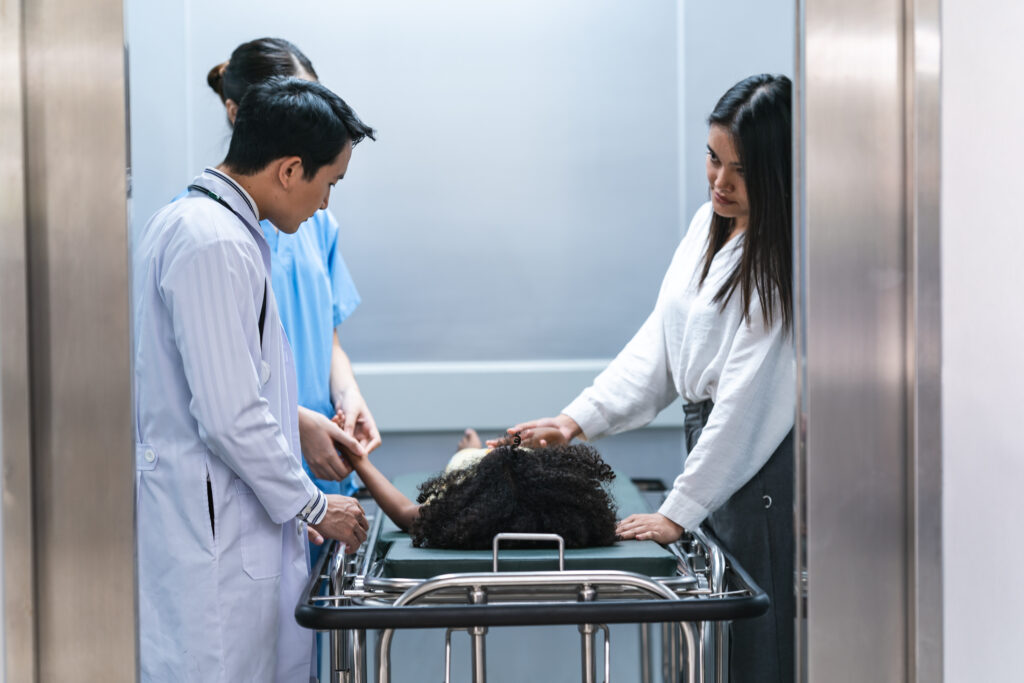
Proposed 2025 IPPS Rule: CMS Targets Readmission Metrics
When it comes to healthcare policy, even seemingly minor adjustments can have significant ripple effects across the industry. The Centers for Medicare & Medicaid Services
With millions of rural Americans at risk of losing health insurance and direct access to care, an unprecedented number of National Rural Health Association (NRHA) members will descend upon Washington, D.C. today to advocate for preserving healthcare access and delivery of services.
Among those attending the NRHA Policy Institute and Capitol Hill meetings will be rural healthcare leaders from across the nation advocating for the provision of regulatory relief for 62+ million rural residents. Other agenda items will include the impact of future changes to the Patient Protection and Affordable Care Act (PPACA), the need for the 340B Drug Program, the opioid and substance abuse public health epidemic, and the need for expanded telehealth reimbursements.
To drive home what’s at risk, attendees will thread impact stories with the following simple facts: 80 critical access hospitals have closed since 2010, with 673 more currently being at risk of closure; there will be a primary care shortage of 30,000 by 2025; and approximately one million nurses are expected to retire in the next 10 years.
Advocates are also expected to tell their respective congressional delegations that rural health is seeking regulatory relief, recognizing several key areas that have gone unaddressed, including the following:
All of these aforementioned issues are widening the disparities in service between rural and non-rural providers.
One factor that would help enormously and would in essence act as a tourniquet limiting the bleeding of rural healthcare is “Save Rural Hospitals,” a piece of legislation known as HR3225 that was introduced by Rep. Sam Graves from the 6th Congressional District in Missouri. First introduced on July 27, 2015 and with support of 34 other members, it was enacted during the 114th Congress when its session ended on Jan. 3, 2017. Known as a “rural provider payment stabilization” effort, the bill included several high-impact provisions, including but not limited to the following. It will:
This also includes an innovative model of care for the future called the Community Outpatient Model. This new Medicare payment designation ensures emergency access for rural patients. This model also allows flexibility through outpatient care established by a Community Needs Assessment (ironically embedded within the PPACA). Additionally, primary care would be provided through a Federally Qualified Health Center (FQHC) lookalike model or a Rural Health Clinic (RHC). There would be no preclusion to swing beds, observation beds, population health models of care, telehealth services, home health services, or infusion services. The Medicare reimbursement ratio for the model is 105 percent of reasonable cost. To help implement it, there would be $50 million in wraparound population health grants.
Rural healthcare needs congressional (and CMS) support in stabilization and reconfiguration. They are vital and deserve vitality.


When it comes to healthcare policy, even seemingly minor adjustments can have significant ripple effects across the industry. The Centers for Medicare & Medicaid Services

Climate change is no longer a distant threat; it’s a current reality affecting all facets of life, including public health. As the planet warms, healthcare
Please log in to your account to comment on this article.

Frank Cohen shows you how to leverage the Comprehensive Error Rate Testing Program (CERT) to create your own internal coding and billing risk assessment plan, including granular identification of risk areas and prioritizing audit tasks and functions resulting in decreased claim submission errors, reduced risk of audit-related damages, and a smoother, more efficient reimbursement process from Medicare.

Dr. Ronald Hirsch presents an essential “A to Z” review of Observation, including proper use for Medicare, Medicare Advantage, and commercial payers. He addresses the correct use of Observation in medical patients and surgical patients, and how to deal with the billing of unnecessary Observation services, professional fee billing, and more.

Explore the top-10 federal audit targets for 2024 in our webcast, “Top-10 Compliance Risk Areas for Hospitals & Physicians in 2024: Get Ahead of Federal Audit Targets,” featuring Certified Compliance Officer Michael G. Calahan, PA, MBA. Gain insights and best practices to proactively address risks, enhance compliance, and ensure financial well-being for your healthcare facility or practice. Join us for a comprehensive guide to successfully navigating the federal audit landscape.

Join healthcare attorney David Glaser, as he debunks refund myths, clarifies compliance essentials, and empowers healthcare professionals to safeguard facility finances. Uncover the secrets behind when to refund and why it matters. Don’t miss this crucial insight into strategic refund management.

Dive deep into the world of Social Determinants of Health (SDoH) coding with our comprehensive webcast. Explore the latest OPPS codes for 2024, understand SDoH assessments, and discover effective strategies for integrating coding seamlessly into healthcare practices. Gain invaluable insights and practical knowledge to navigate the complexities of SDoH coding confidently. Join us to unlock the potential of coding in promoting holistic patient care.

HIM coding expert, Kay Piper, RHIA, CDIP, CCS, reviews the guidance and updates coders and CDIs on important information in each of the AHA’s 2024 ICD-10-CM/PCS Quarterly Coding Clinics in easy-to-access on-demand webcasts, available shortly after each official publication.

Kay Piper reviews the guidance and updates coders and CDISs on important information in the AHA’s fourth quarter 2024 ICD-10-CM/PCS Quarterly Coding Clinic in an easy to access on-demand webcast.

Kay Piper reviews the guidance and updates coders on information in the AHA’s third quarter 2024 ICD-10-CM/PCS Coding Clinic in an easy to access on-demand webcast.
Happy World Health Day! Our exclusive webcast, ‘2024 SDoH Update: Navigating Coding and Screening Assessment,’ is just $99 for a limited time! Use code WorldHealth24 at checkout.